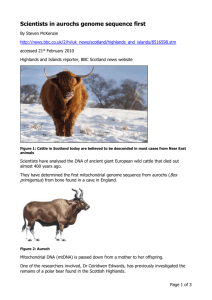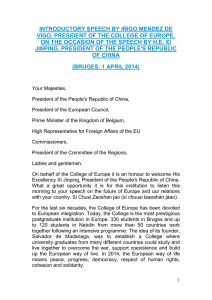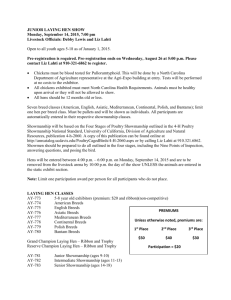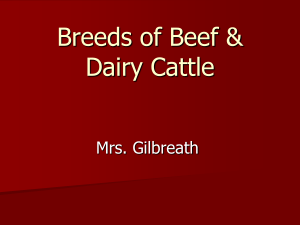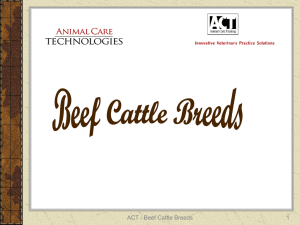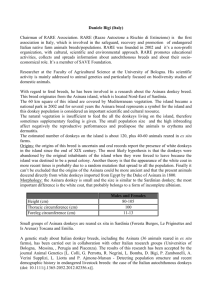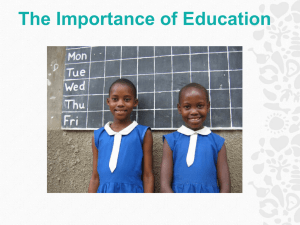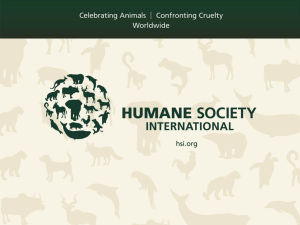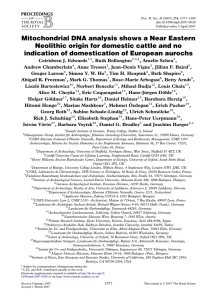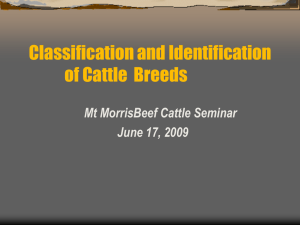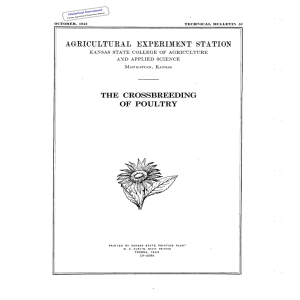here - European WILDLIFE
advertisement
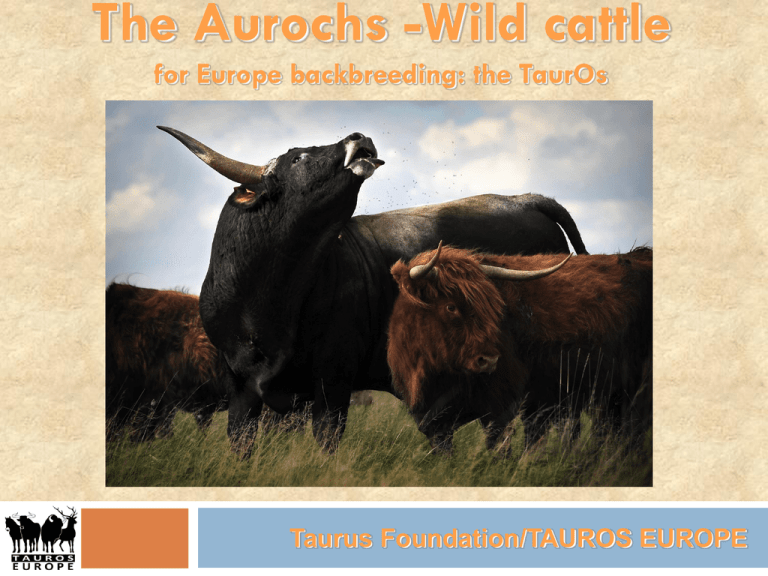
The Aurochs -Wild cattle for Europe backbreeding: the TaurOs Taurus Foundation/TAUROS EUROPE Distribution Red area represents the range of Bos Primigenius Primigenius; the Aurochs subspecies that is our focus Morphology The Aurochs was a big animal was a slender animal had long legs had a big, long and slender face showed sexual dimorphism in color showed sexual dimorphism in height was big horned Aurochs bulls stood between 160 and 185 cm high at the shoulders. Some 20 to 50 cm taller than many modern bovines Morphology, examples Sexual dimorphism Big size Hornform Introduction TAUROS Europe/Taurus foundation; Our goal: to enhance natural processes (i.e. herbivory/grazing) in Dutch/European nature; Our means: a herd of cattle and horses/ponies of over 600 animals (700 cattle, 100 horses/ponies); Total managed area: about 2.500 ha in the Netherlands (Taurus foundation), ready for Europe (TAUROS Europe); Experience: more than 20 years of experience; Cooperation: Ark Nature (Nl), Rewilding Europe & others (EU); Clients: National forestry service, other nature organizations, municipalities, for ‘grazing’; Wild cattle For feral grazing breeds have to be: Self-sufficient; Fattening up easily in summer/harvest and be (winter)hardy; Using a broad variety of vegetation (eating grass, but also some browsing); Able to adapt to changing and fluctuating circumstances; Easy calving; Extensively managable; In general: fit for purpose; Many present day breeds are too specialized for a complete self-sufficient feral grazing system. The alternative: TaurOs project Goal: The breeding and distribution of a complete self sufficient cattle breed as the best alternative for the extinct Aurochs the: TaurOs; Based on scientific evidence: the same ecological role, same appearance and close to the genetic constitution; Applicable in public natural areas (at least in Nl); The Aurochs as a reference. Why? The domesticated cattle breeds have disadvantages; Free roaming cattle is a key species for European nature and could be the crown on a successfull Rewilding Initiative; We (the people behind the project) would be very pleased if this project proves to be successfull; Scientifically spoken there are challenges and opportunities: but it will at least lead to a better understanding of (wild) cattle. Can it be done? There is far more knowledge on the Aurochs than in the early 20th century: Historical records (Greek, Roman medieval Polish and German sources); Archaeozoology from all over Europe (skeletons, horns, skulls, jaws); Isotope studies (feeding patern, ecology); Neolithic art (cave paintings, rock carvings); Historical art (drawings, statues, etc); Modern genetics: mtDNA of Aurochs is available, work on nuclear DNA is being done; So yes, we think it can be done. Reference The project step by step 1) Determining the characteristics of the Aurochs (by a scientific committee); 2) A selection of European bovine breeds with at least some of the right characteristics (about 30 breeds); 3) The collection of ancient bone (and other) material from the Aurochs (from several European locations). Extraction and analyses of the ancient-DNA as a genetic reference. Technically difficult; 4) The breeding programme, worked out into breeding plans for different European locations. Use of local breeds if possible; 5) Monitoring and evaluation: re-iterating loop of the breeding process. Where do we stand? 2008: Start of the project, forming of the scientific committee; 2009: Selection European breeds, importing most promising breeds (s.a. Maremmana primitivo); 2010: Introduction of first crossbreeds in public nature areas; 2011/2012: DNA-extraction and analyses (voorjaar 2011). Scaling up genetic research; 2009-2012: ‘Broad’ crossings so we can select later on. ‘No regret’-steps. Some cattle breeds Maremmana ‘primitiva’ (Italy) Pajuna (Southern Spain) Maronesa (Northern Portugal) Podolica (Italy) Limia (Northwestern Spain) Sayaguesa (north-central Spain) Results Broad international publicity (Time magazine, National Geographic, Volkskrant (national Dutch newspaper); Genetic research; The first crossbreds (natural crossings, artificial insemination, embryotransplantation). The F1: Don’t they look nice? Different breeds Maremmana & Limia Different breeds Podolica & Pajuna Different breeds Maronesa Crossbreds Highlander x Maremmana Crossbreds Pajuna x Maremmana & Limia x Maremmana Crossbreds: Maremmana x Pajuna Results: herd in transition Desired end result Photo manipulations © Daniel Foidl Artist Impressions © Thomas Hammond Future image?
